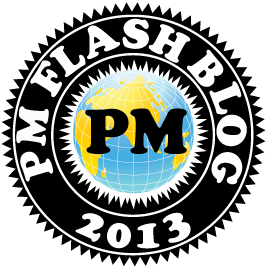
I have been invited to present a bar camp session at the Thomson Reuters London PM UnConference 2013. The topic is “soft skills”. If you are planning to attend my session and it hasn’t happened yet, please stop reading now, as there are spoilers below!
The topic was selected from a list of topics that had been requested by invitees. I am rather intrigued to know why it was suggested, and what on earth they hope to gain from the session. Surely nobody expects to learn soft skills in 30 minutes? If so, they’re going to be disappointed!
What are soft skills?
It’s a vague and fluffy term, and I intend to keep it that way. Some dislike calling it that, and I have heard “intrinsic skills” offered as an alternative – which I understand to mean the skills that are within us. “People skills” is another option.
It might be easier to define what it is not. It is not the “hard skills” of project planning, progress tracking and reporting – which is what many people think project management is all about. But practitioners with any experience know that project management is a whole lot more than that.
Why is it important?
Let’s look at The Seven Essentials, and consider the hardness or softness of each. I’m going to borrow the Mohs Scale, which is, of course, an appropriate way to measure hardness. It goes from very soft (1 – Talc) to very hard (10 – Diamond).
Benefits tend to be hard business targets “achieve revenue of xx”, “reduce cost of operation by yy”, but may – or rather, should – also have a soft element such as “improve customer satisfaction by zz”. Hardness: 7.
Scope and Quality also tend to be defined in hard business language: “implement this new system”, but for change projects might encompass soft elements: “reorganise this department, and improve staff morale”. Hardness: 6.
Stakeholders and Communications are strongly soft factors, since we are dealing with human beings and their aspirations. Hardness: 2.
Plan. A traditional project management skill, and can be largely mechanical. Needs just a smattering of people skills to gain buy-in. Hardness: 9
Team. Entirely about getting the best out of people. Plenty of talc needed. Hardness: 1
Suppliers are people too, so a mix of soft and hard skills are called for. Negotiation is often a surprisingly soft skill, with a hard edge (“Speak softly, and carry a big stick” – Theodore Roosevelt). Hardness: 5
Risks arise from all sources in and around the project. When things go wrong, it is often a communications and/or human problem at the core. Hardness: 4
The point I’m trying to illustrate is that most of what a good project manager does relies on soft skills.
How do I acquire these skills?
When project managers become project managers, they often start by taking a course and a qualification. That is all well and good, but the focus of these accreditations (including PMI, Prince2, APM and IPMA) tends to be hard skills. There is some soft skill content – notably in stakeholder management – and there is recognition of the importance of communications skills, but don’t expect to acquire any of these through a qualification-oriented project management course.
Some trainers incorporate excellent soft skill content in their project management courses, but they don’t tend to be the ones that are built around PM qualifications. If anyone is looking for a more holistic approach, I would be happy to recommend one or two training partners that I have worked with in the past.
Instead, if it is training you need, then look to more general management training topics, such as:
- Leadership skills
- People (or team) management
- Communications skills (which should be wider than just presentation skills)
- Coaching (or Executive Coaching)
For further inspiration, there are some excellent blogs and twitter feeds worth following. I particularly enjoy:
- Blogramme by Ian Webster (@IanWebster) – an experienced project manager, who speaks from the heart and from experience
- Joining the Dots by Anthony Allinson (@allinsona) – a senior manager at Thomson Reuters, who knows far too much about the human aspects of project management
- Sir John Whitmore’s twitter feed – @PCIntl – for an occasional reminder of the power of asking the right question
…and of course if you are reading this, then you already know about the Q2 Associates blog.
Finally, the best way to develop your soft skills is to get some practice. Stop reading this blog, step away from MS Project, and go and talk to your team!
Here is a link to the presentation material from my Thomson Reuters session:
http://prezi.com/0u1zeuvdwwaj/?utm_campaign=share&utm_medium=copy



